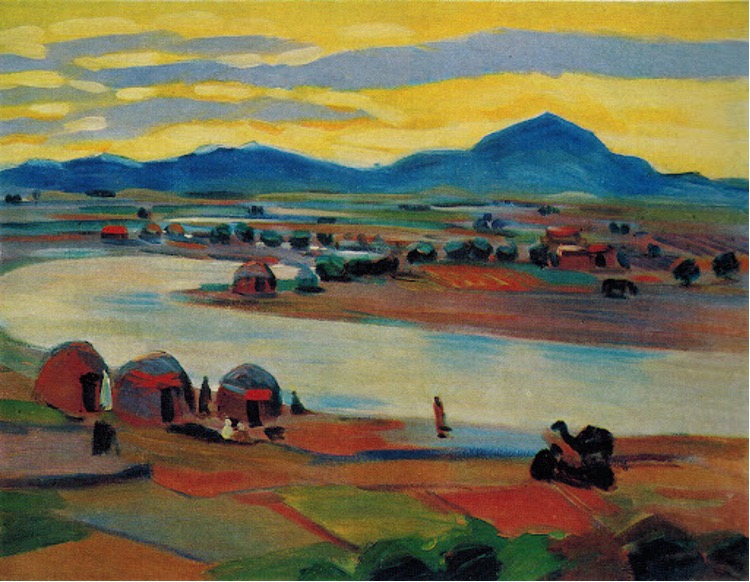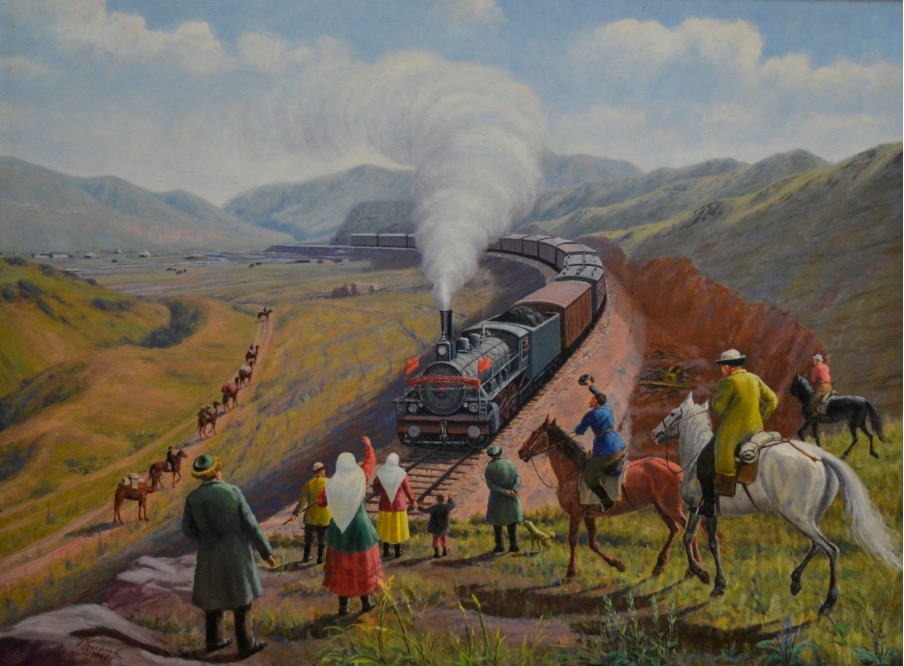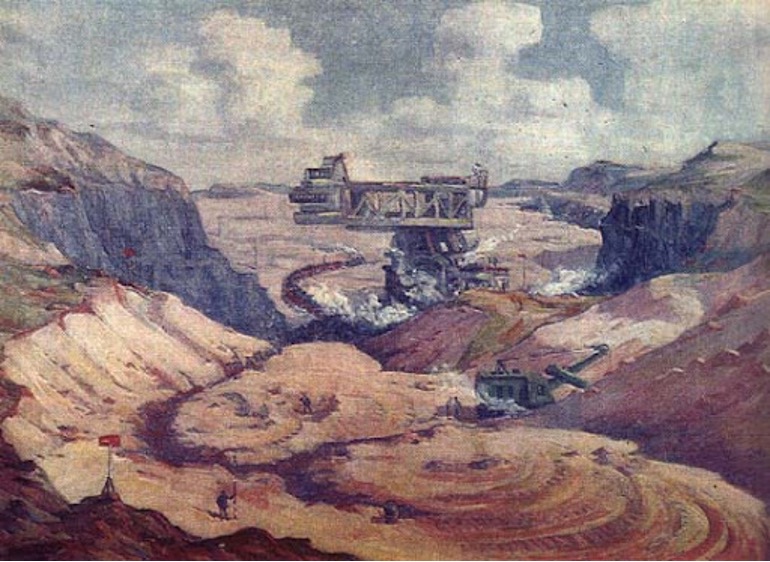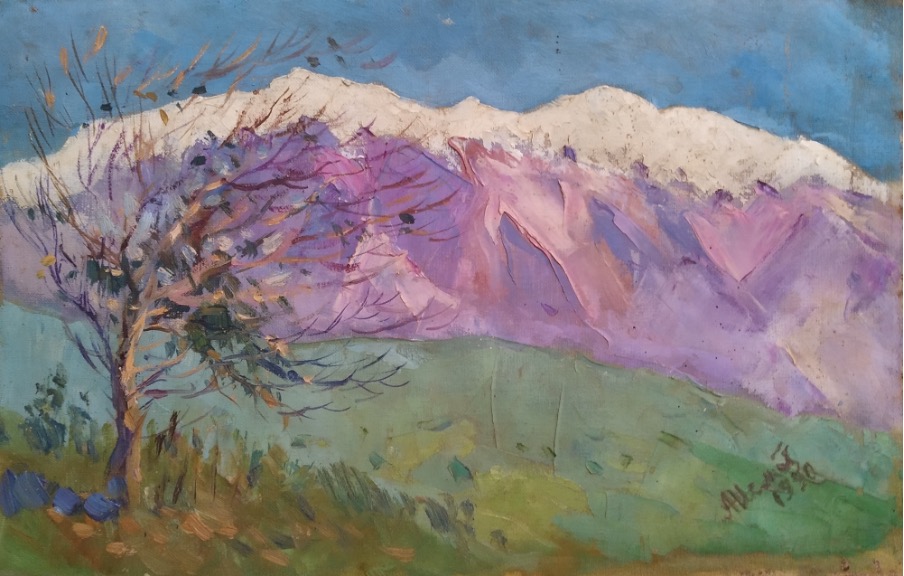Kazakh painting as an independent type of fine art owes the very fact of its formation and development entirely to the events of the twentieth century. The turbulent twenties and thirties of the last century formed and defined the stylistic trends of the republic's fine arts, primarily painting. Professional types of artistic creativity in Kazakhstan - the national theater, the national school of fine arts - appeared during the Soviet period. The priorities of the time led to a change in the artistic consciousness of our compatriots, the traditions of the European school appeared and strengthened throughout the former USSR.
The educational activities of the first Russian, Soviet masters of art (N. Khludov, A. Cherkassky, V. Eifert, L. Brummer, L. Leontiev, S. Kalmykov, V. Sterligov and others) played an important role, by the will of fate, who found themselves on the territory of Kazakhstan in the twenties, thirties, the forties of the twentieth century, as well as the active position of the first Kazakh masters. Kasteev, the brothers H. and K. Khodzhikov, U. Tansykbaev, A. Ismailova with their irrepressible desire to master a new kind of fine art.

Many of the repressed masters taught at the Alma-Ata Art College (A. Cherkassky, L. Brummer, L. Leontiev and others), in art studios in Pavlodar, Dzhambul, Karaganda ( L. Brummer, V. Eifert), thereby made an invaluable contribution to the development of fine art. Through them, Kazakh masters directly learned the specifics of painting techniques.
At the same time, the most serious role in the formation of the skill of Russian painters was provided by direct training in the art centers of the Soviet Union. More than one generation of artists has been educated in Moscow and Leningrad art schools and academies, starting with A. Ismailova, M. Kenbayeva, S. Mambeeva, K. Telzhanova, G. Ismailova, A. Galimbayeva. The history of fine arts in Kazakhstan can be divided into two stages: the formation and development of professionalism in Soviet times and the art of the independence period. Being the result of the socio-political realities of the time, each period is a whole tangle of complex and ambiguous phenomena, but the painting of the period of independence is a direct successor to the Soviet era.
In fact, it turned out that the art of Soviet Kazakhstan laid not only the foundations of professionalism, but also brought with it a wide range of directions, despite total censorship and the dictate of socialist realism. Three generations of masters have grown up in his bosom, and their work is now the pride of Russian art.
One of the factors that determined the ways of formation of Kazakh painting is the fact that it was formed during the crisis of European culture, when its classical traditions were criticized by the increasingly strengthening positions of the world avant-garde - modernism. The turning point in Russian history coincided with an epochal turning point in the culture of mankind. At the same time, Kazakh art began to form in its main features within the framework of Stalinist classicism.
Having chosen the general direction of socialist realism in 1932, Soviet ideology promoted realistic art. Socialist realism was not so much accessible to the understanding of the Soviet man, as it did not allow further freedom of artistic interpretation. Tolerance and pluralism were seen as a threat to the new emerging Soviet government. The method of socialist realism was actually neoclassicism, with the predominance of its academic expression.
From the very first years of their formation, Kazakh painters, who found themselves in the artistic circles of Moscow and Leningrad, studied many stylistic trends of art of the early twentieth century. In their ranks and the brothers K. and H. The Khodzhikovs, and A. Ismailov, and U. Tansykbayev.

Separately, apart from the founders of Kazakh painting is the art of Abylkhan Kasteev — a truly national master with a large reserve of creative energy. The first experiments of pictorial skill A. Kasteev receives N. Khludov's lessons. He will always be an adherent of the realist school of painting, not so much because the state ideology insists so much, as this new narrative art for him was not peculiar to the nomadic type of thinking. The generality, symbolism, and metaphoricity inherent in Kazakh traditional art are compared in his canvases with the documentary accuracy of narration about the expanses of the Motherland.
The first painters and theatrical figures laid the foundation for the further development of the new Kazakhstan. The generation of masters educated in Moscow and Leningrad art centers creates an almost completely Europeanized person. Russian Russian art of the early twentieth century is of great importance in the development of Kazakh Soviet painting, however, by chance they will become known only after time has passed, the echo of Russian impressionism, symbolism, the work of French post-impressionists, abstractionism, cubo-futurism will have a prolonged effect. influence over time.

Each generation of Kazakh painters had to find new ways to highlight the issues of their era. And if Abylkhan Kasteev, Mukhamedzhan Dzhankin, Abdulla Tashkent, Abdugani Tashbayev, Beisembet Sarsenbayev, Madi Uskembayev, Zagruddin Nazirov, Aubakir Ismailov needed, first of all, to learn academic skills, then S. Mambeev, M. Kenbaev, K. Telzhanov, Sakhi Romanov and other artists faced there are already other tasks. They, who are fluent in technical skills, have already found themselves cramped within the boundaries of academic painting. The generation of masters, one of the first trained in the art centers of the Soviet country, created masterpieces of Kazakh painting. In line with Soviet art, they became an example of reflecting the national culture and spatial diversity of the earth.

The personalities of the artists themselves are truly large-scale, they managed not only not to drown in the sea of Soviet socialist realist art, but also to lay the foundations of a national school. The activity of only A. It is difficult to overestimate Ismailov today, because the range and breadth of the artist's views is amazing: in painting, he remained a great singer of his homeland, and made an invaluable contribution to the development of Russian cinema and theater, along with V.Telyakovsky, K. Khodzhikov and others.
The painting of Kazakhstan in the forties and especially in the fifties and sixties of the twentieth century was a time of creating a solid base of technical skill. It was during these years that a domestic school with its own stylistic features of development was already being created.




